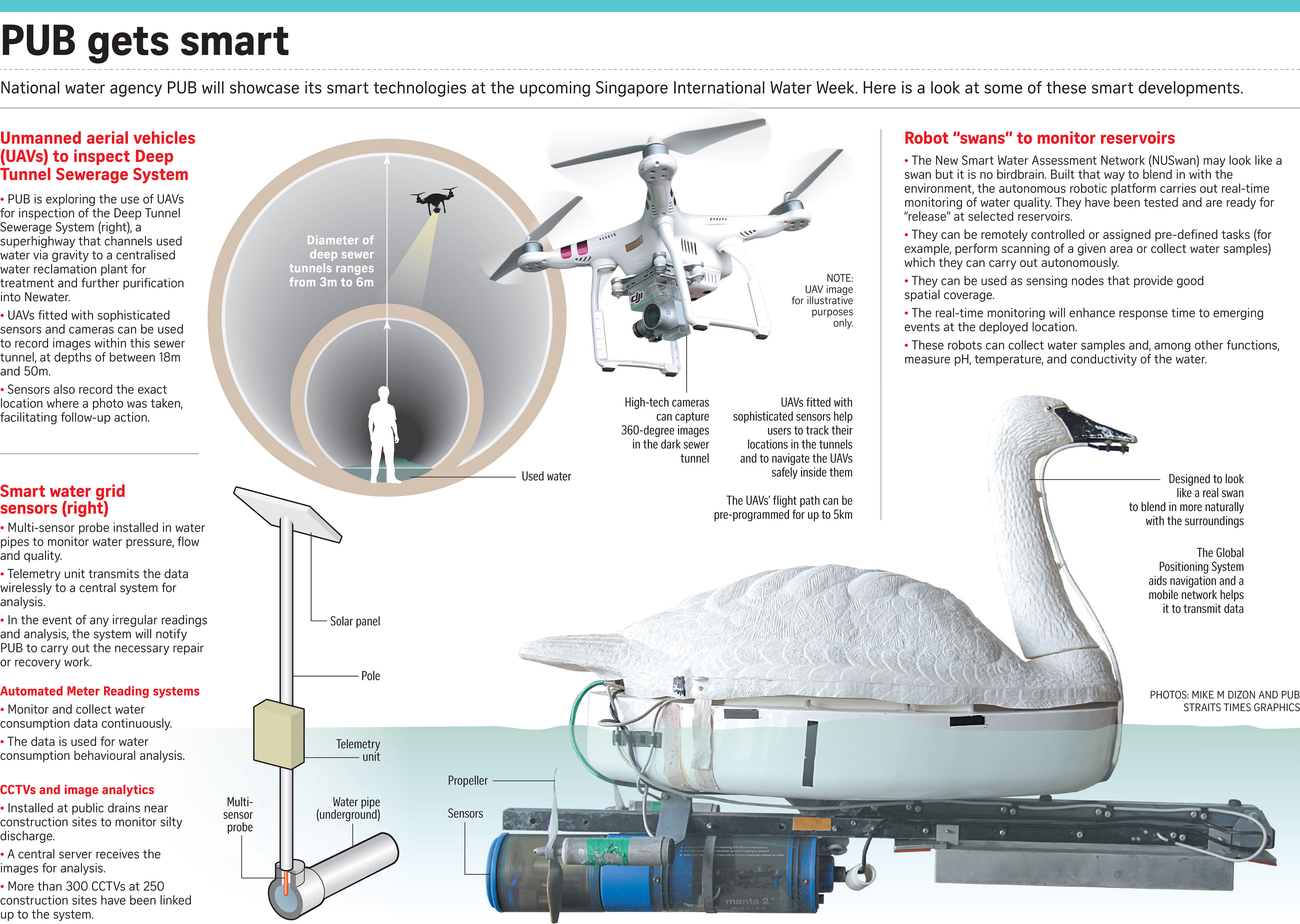PUB gets smart
National water agency PUB will showcase its smart technologies at the upcoming Singapore International Water Week. Here is a look at some of these smart developments.
Sign up now: Get ST's newsletters delivered to your inbox

The New Smart Water Assesment Network (NUSwan), an autonomous robotic platform which conducts real-time water quality monitoring in reservoirs, is pictured at Marina Barrage on June 30.
ST PHOTO: MARK CHEONG
Follow topic:
Unmanned aerial vehicles (UAVs) to inspect Deep Tunnel Sewerage System
• PUB is exploring the use of UAVs for inspection of the Deep Tunnel Sewerage System, a superhighway that channels used water via gravity to a centralised water reclamation plant for treatment and further purication into Newater.
• UAVs fitted with sophisticated sensors and cameras can be used to record images within this sewer tunnel, at depths of between 18m and 50m.
• Sensors also record the exact location where a photo was taken, facilitating follow-up action.
Smart water grid sensors
• Multi-sensor probe installed in water pipes to monitor water pressure, flow and quality.

PUB gets smart.
PHOTOS: MIKE M DIZON AND PUB
• Telemetry unit transmits the data wirelessly to a central system for analysis.
• In the event of any irregular readings and analysis, the system will notify PUB to carry out the necessary repair or recovery work.
Automated Meter Reading systems
• Monitor and collect water consumption data continuously.
• The data is used for water consumption behavioural analysis.
CCTVs and image analytics
• Installed at public drains near construction sites to monitor silty discharge.
• A central server receives the images for analysis.
• More than 300 CCTVs at 250 construction sites have been linked up to the system.
Robot "swans" to monitor reservoirs
• The New Smart Water Assessment Network (NUSwan) may look like a swan but it is no birdbrain. Built that way to blend in with the environment, the autonomous robotic platform carries out real-time monitoring of water quality. They have been tested and are ready for "release" at selected reservoirs.
• They can be remotely controlled or assigned pre-defined tasks (for example, perform scanning of a given area or collect water samples) which they can carry out autonomously.
• They can be used as sensing nodes that provide good spatial coverage.
• The real-time monitoring will enhance response time to emerging events at the deployed location.
• These robots can collect water samples and, among other functions, measure pH, temperature, and conductivity of the water.

